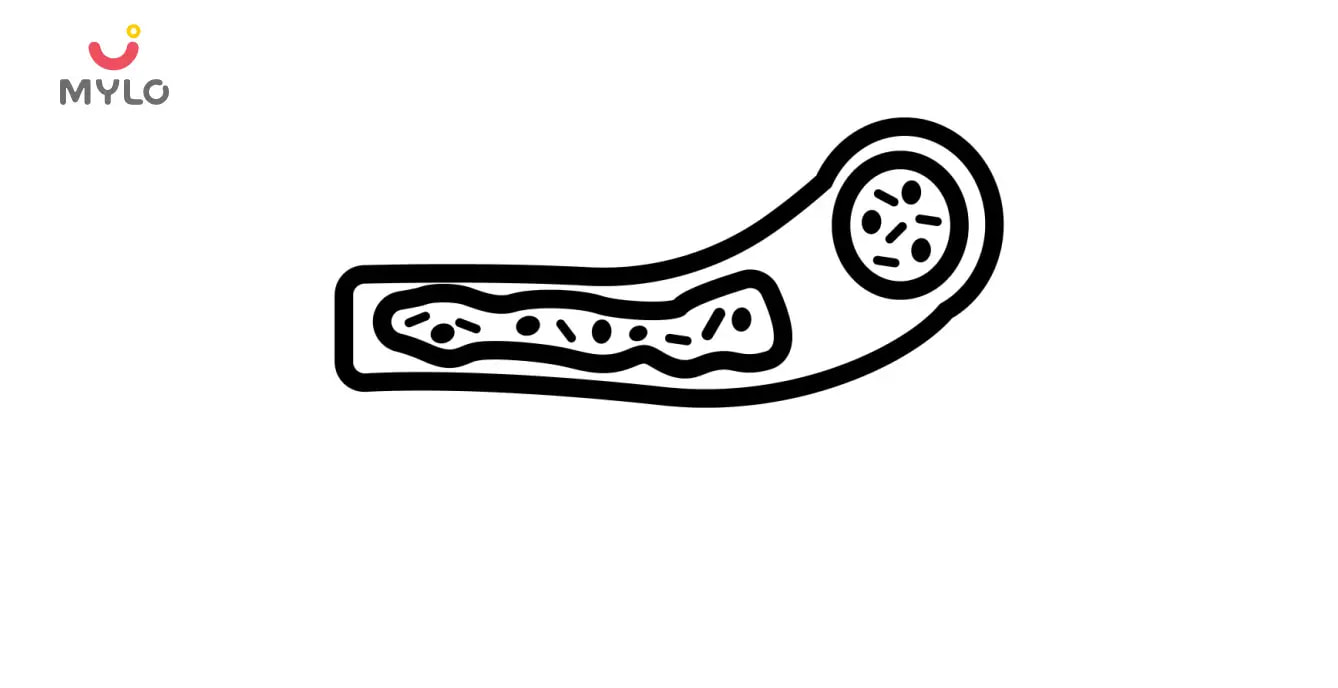Home

Illnesses & Infections

Sepsis: Symptoms, Causes, Treatment & Risks
In this Article

Illnesses & Infections
Sepsis: Symptoms, Causes, Treatment & Risks
Updated on 3 November 2023
What is Sepsis?
Sepsis is a life-threatening illness caused by the body's immune response to infection. There are times when the immune system goes into overdrive as a response to infection and causes damage to body tissues. A septic infection is life-threatening because it can quickly progress to septic shock. This shock can dramatically drop blood pressure and lead to organ failure and death.
Is sepsis contagious?
Sepsis and septic wounds are not contagious and do not spread from person to person or through physical contact. Rather, it spreads within the body via the bloodstream.
Stages of sepsis
Sepsis syndrome is divided into three stages. The three types of sepsis are:
-
Sepsis (SIRS)
Sepsis is not easily diagnosable at this stage. There is a high or low body temperature, rapid heart and breathing rate. The white blood cell count will either be high or low.
-
Severe sepsis
During this stage, organ dysfunction begins due to the blood pressure is low due to sepsis. Organs stop receiving adequate blood to function.
It can result in symptoms such as:
-
Secreased urinary output
-
Low platelet count
-
Breathing difficulty
-
Stomach pain
-
Sudden change in mental state
-
Septic shock
In the most severe stage, there is a chance of multi-organ failure. Septic shock has the highest death rate, ranging between 30- 50%.
What are the symptoms of Sepsis?
The presence of infection must be suspected or proven before sepsis can be diagnosed:
-
Mental confusion
-
Systolic blood pressure is less than or equal to 100 mmHg.
-
Breathing rate equal to or greater than 22 breaths per minute
Signs of sepsis
Here are some of the most common signs of a septic infection:
-
Rapid heartbeat and respiration.
-
Respiration difficulty.
-
Confusion or a loss of direction.
-
Extreme discomfort or pain.
-
A fever, shivers, or extreme cold.
-
Sweaty or clammy skin
Signs and symptoms of septic shock
In septic shock, there is a severe drop in blood pressure. This causes a disturbance in how the cells work and produce energy. The progression of a septic infection to septic shock increases the chances of death. These are the signs of progression:
-
Medication is required to maintain systolic blood pressure.
-
Lactic acid levels in the blood are elevated. This is an indication that the cells are not using adequate amounts of oxygen.
Causes of Sepsis
Sepsis can be caused by any type of bacterial, viral, or fungal wound. The most common causes of sepsis include infections in:
-
Pneumonia (lung infection)
-
Kidney, bladder, and other parts of the urinary system
-
Digestive system
-
Bloodstream
-
Catheter sites
-
Wounds and burns
Risk factors for sepsis
Several risk factors increase the likelihood of developing body sepsis:
-
Advanced age
-
Infants
-
Compromised immune system
-
Kidney or liver disease
-
ICU or longer hospital days
-
Invasive devices such as catheters that are inserted into the bloodstream
-
Previous use of medications like antibiotics or steroids
Complications related to sepsis
In a sepsis patient, as the condition worsens, blood flow to vital organs (brain, liver, kidney, and heart) is compromised. As sepsis fever progresses, it can cause abnormal clotting of the blood, which damages and bursts the blood vessels. In turn, causes tissue damage. Most people are able to recover from mild sepsis, but the septic shock is what leads to death. An episode of severe septic infection places the person at higher risk for future infections.
How is sepsis diagnosed?
Sepsis is diagnosed using a number of physical signs in the body, such as:
-
Sepsis fever
-
Low blood pressure
-
Elevated heart rate
-
Difficult breathing
Doctors also perform tests to check for organ damage. Some of these tests are used to identify the germ that is causing the infection. Tests can include bacterial culture tests, viral tests, and fungal tests.
You may like : Puerperal Sepsis: Symptoms, Causes, Risks & Treatment
Criteria for sepsis
The SOFA(qSOFA) score is the criteria used to quickly diagnose sepsis. It includes the following:
-
Change in mental status
-
100 mm Hg or less for systolic blood pressure (SBP).
-
The rate of breathing equals or exceeds 22 breaths per minute.
A score of more than or equal to 2 is suggestive of sepsis.
Treatment for sepsis
The three main forms of treatment given to a septic patient are as follows:
-
Antibiotics are given through the veins into the bloodstream. It should start within an hour of the diagnosis. It is replaced by tablets in 2–4 days.
-
Intravenous fluids are started immediately with antibiotics.
-
Vasopressor medications are given when the blood pressure is low despite the treatment.
How to recover from sepsis?
Following sepsis, the recovery phase begins in the hospital by gradually assisting the person to move around and take care of themselves. It includes bathing, sitting up, standing, walking, and using the restroom independently. Rehab's goal is to get the person back to their prior state of health. Recovery is started gradually based on your current health.
How to prevent sepsis?
Sepsis can be prevented by these simple steps:
-
Prevent infections by taking care of chronic infections.
-
Take vaccines whenever needed.
-
Practice good hygiene whenever there is an injury.
-
Awareness of all the signs and symptoms of sepsis
-
Seek early care.
Sepsis is a life-threatening disease. Early detection and intervention can be lifesaving.



Written by
Parul Sachdeva
A globetrotter and a blogger by passion, Parul loves writing content. She has done M.Phil. in Journalism and Mass Communication and worked for more than 25 clients across Globe with a 100% job success rate. She has been associated with websites pertaining to parenting, travel, food, health & fitness and has also created SEO rich content for a variety of topics.
Read MoreGet baby's diet chart, and growth tips

Related Articles
Related Questions
Hello frnds..still no pain...doctor said head fix nhi hua hai..bt vagina me pain hai aur back pain bhi... anyone having same issues??

Kon kon c chije aisi hai jo pregnancy mei gas acidity jalan karti hain... Koi btayega plz bcz mujhe aksar khane ke baad hi samagh aata hai ki is chij se gas acidity jalan ho gyi hai. Please share your knowledge

I am 13 week pregnancy. Anyone having Storione-xt tablet. It better to have morning or night ???

Hlo to be moms....i hv a query...in my 9.5 wk i feel body joint pain like in ankle, knee, wrist, shoulder, toes....pain intensity is high...i cnt sleep....what should i do pls help....cn i cosult my doc.

Influenza and boostrix injection kisiko laga hai kya 8 month pregnancy me and q lagta hai ye plz reply me

RECENTLY PUBLISHED ARTICLES
our most recent articles

Diet & Nutrition
গর্ভাবস্থায় আলুবোখরা: উপকারিতা ও ঝুঁকি | Prunes During Pregnancy: Benefits & Risks in Bengali

Diet & Nutrition
গর্ভাবস্থায় হিং | ঝুঁকি, সুবিধা এবং অন্যান্য চিকিৎসা | Hing During Pregnancy | Risks, Benefits & Other Treatments in Bengali

Women Specific Issues
স্তনের উপর সাদা দাগ: লক্ষণ, কারণ এবং চিকিৎসা | White Spots on Nipple: Causes, Symptoms, and Treatments in Bengali

Diet & Nutrition
গর্ভাবস্থায় পোহা: উপকারিতা, ধরণ এবং রেসিপি | Poha During Pregnancy: Benefits, Types & Recipes in Bengali

Diet & Nutrition
গর্ভাবস্থায় মাছ: উপকারিতা এবং ঝুঁকি | Fish In Pregnancy: Benefits and Risks in Bengali

Diet & Nutrition
গর্ভাবস্থায় রেড ওয়াইন: পার্শ্ব প্রতিক্রিয়া এবং নির্দেশিকা | Red Wine During Pregnancy: Side Effects & Guidelines in Bengali
- ইনার থাই চ্যাফিং: কারণ, উপসর্গ এবং চিকিৎসা | Inner Thigh Chafing: Causes, Symptoms & Treatment in Bengali
- গর্ভাবস্থায় ব্রাউন রাইস: উপকারিতা ও সতর্কতা | Brown Rice During Pregnancy: Benefits & Precautions in Bengali
- Velamentous Cord Insertion - Precautions, Results & Safety
- Unlock the Secret to Flawless Skin: 7 Must-Have Qualities in a Face Serum
- Unlock the Secret to Radiant Skin: How Vitamin C Serum Can Transform Your Complexion
- Gender No Bar: 10 Reasons Why Everyone Needs a Body Lotion
- Unlock the Secret to Radiant Skin How to Choose the Perfect Body Lotion for Your Skin Type
- Top 10 Reasons to Apply a Body Lotion After Every Bath
- Communication in Toddlers: Milestones & Activities
- How to Improve Vocabulary for Toddlers?
- A Comprehensive Guide to Understanding Placenta Accreta
- Vulvovaginitis in Toddlers Causes, Symptoms and Treatment
- A Comprehensive Guide to Understanding Cerebral Palsy in Children
- Bitter Taste in Mouth During Pregnancy: Understanding the Causes and Remedies


AWARDS AND RECOGNITION

Mylo wins Forbes D2C Disruptor award

Mylo wins The Economic Times Promising Brands 2022
AS SEEN IN
















- Mylo Care: Effective and science-backed personal care and wellness solutions for a joyful you.
- Mylo Baby: Science-backed, gentle and effective personal care & hygiene range for your little one.
- Mylo Community: Trusted and empathetic community of 10mn+ parents and experts.
Product Categories
baby carrier | baby soap | baby wipes | stretch marks cream | baby cream | baby shampoo | baby massage oil | baby hair oil | stretch marks oil | baby body wash | baby powder | baby lotion | diaper rash cream | newborn diapers | teether | baby kajal | baby diapers | cloth diapers |








